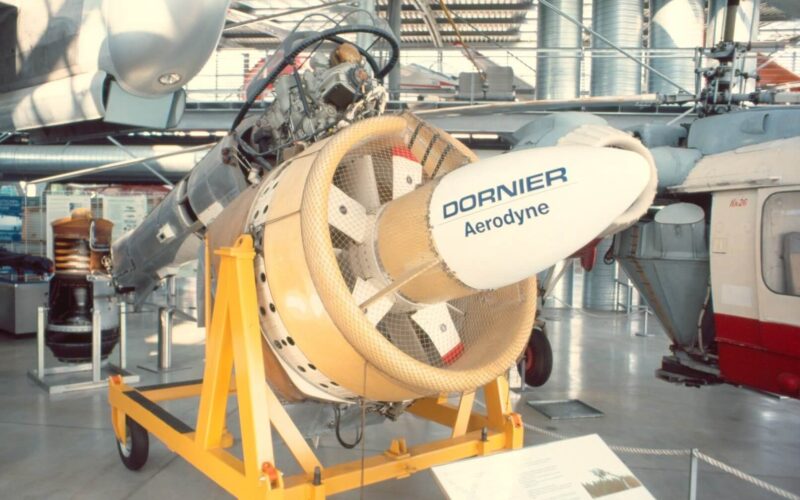Wingless and tailless are usually the last words, which describe an aircraft. Even though people are used to seeing and flying with regular design airplanes, containing wings and tails, the aviation industry holds various weird and strange aircraft designs.
During World War I and World War II the aviation industry was definitely booming. During that time, the aviation market had high needs and requirements that led many aircraft engineers to create many bizarre and uniquely conceptualized aircraft projects. One of these aircraft designers was Alexander Lippisch, who produced a series of tailless, wingless, rocket-powered and many more unique aircraft. One of Lippisch’s masterpieces was Lippisch-Dornier Aerodyne, which holds the name as one of the weirdest, most unusual and wingless aircraft ever made.
The mind behind the bizarre aircraft projects
Alexander Martin Lippisch (1894-1976) was a known aeronautical engineer, a pioneer of aerodynamics in Germany. Lippisch marked himself into the history of aviation by making essential contributions to the knowledge of tailless aircraft, delta wings and the ground effect.
Image by Bundesarchiv, Bild 102-13690 / CC-BY-SA 3.0
His early interest in aerospace started with the flight demonstration by Orville Wright over Tempelhof, Berlin, in 1909. During World War I, Lippisch had the opportunity to fly as an aerial photographer and mapper.
The concept of tailless aircraft
After the war, Lippisch followed his dream ‒ aviation and started to work for Zeppelin Company, where he was introduced to the concept of tailless aircraft, which is defined as an aircraft that does not have tail assembly and another horizontal surface besides its main wing. Lippisch’s passion sparked into action and together with Gottlob Espenlaub presented their first experimental design aircraft ‒ Lippisch-Espenlaub E-2 glider.
Welcome the rocket-powered Ente
During the period of 1920-1930s, Lippisch mostly worked on the research program that contained 50 different tailless aircraft designs. In 1928, the “father of tailless aircraft” presented the world’s first rocket-powered full-size aircraft named Ente, meaning duck in German. The idea of rocket-powered aircraft covers planes that have a rocket engine for propulsion.
Delta wings get off the ground
Through 1931-1939, Lippisch succeeded in the delta wing creation by developing five aircraft: Delta-I to Delta-V. Delta wings are defined as a triangle-shaped form of aircraft wings. Here, Lippisch again made history by creating Delta I, the first tailless, delta wing aircraft to fly.
The creation of the famous Lippisch-Dornier Aerodyne
World War II shut down most of Lippisch projects. During 1950-1963, he was working for the aeronautical division of the Collins Radio Company in Iowa.
In 1963, Lippisch had to stop its project because of a sudden diagnosis of cancer. Luckily, he recovered after three years and came back to the creation of the aerodyne prototype. Lippisch designed a prototype of wingless aircraft, known as Lippisch-Dornier Aerodyne, which attracted attention from the Federal German Ministry of Defense, West German government. They obtained the design of Lippisch’s prototype and hired Dornier Flugzeugwerke, a German aircraft manufacturer, to build it. The aircraft was named as the Lippisch-Dornier Aerodyne, referring to the creator and recreator of world-known wingless aircraft.
@Daarck @WiredUK Aerodyne concept Dr. Alexander Lippisch Dornier E-1.1968-1971. successfully tested in 1972 pic.twitter.com/UIupj9DuCf
— Paul Myles (@HL10PM) January 12, 2016
The legacy of Lippisch-Dornier Aerodyne
The weird, strange and unusual design of the aircraft marked Lippisch’s name as one of the aviation geniuses. Lippisch-Dornier Aerodyne was built to have a conventional tail unit at the rear that allowed for control of the pitch and yaw. The main principle of the Aerodyne system combined the production of lift and thrust utilizing a single unit and flow channel such as a ducted fan. The Aerodyne worked as a land or ship-supported drone used for aerial reconnaissance.
Through the years, Lippisch demonstrated his unparalleled understanding of the modern aviation concept. Lippisch researched and analyzed numerous aircraft and their designs, which led to the idea that if the same propulsive mass of air is directed towards a duct, then it can also produce an equal reaction that can keep an aircraft afloat. By creating tailless, wingless, delta-wing-shaped aircraft, Lippisch proved the new perspectives of the modern aircraft concept. Also, Lippisch-Dornier Aerodyne is still considered to be one of the most interesting aircraft-related concepts that were ever developed.


